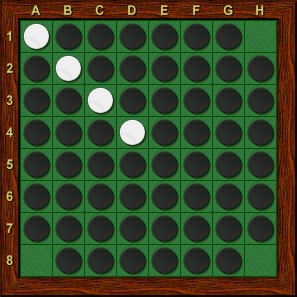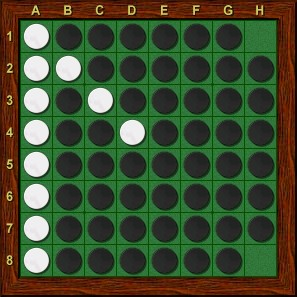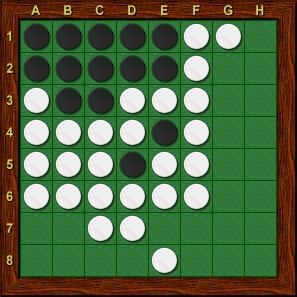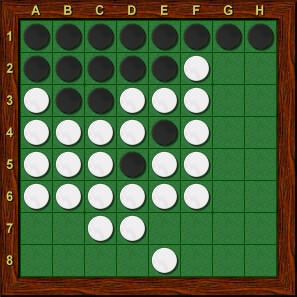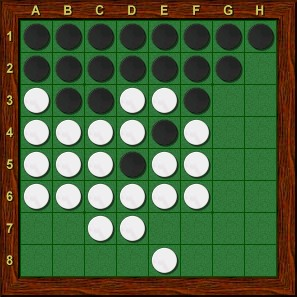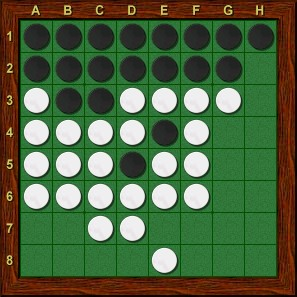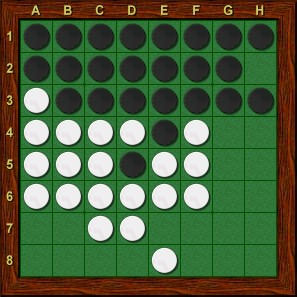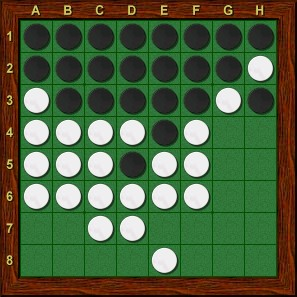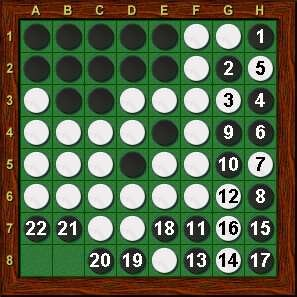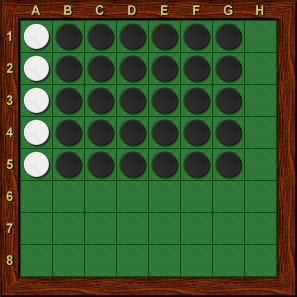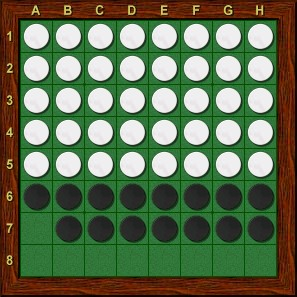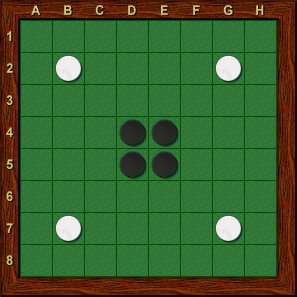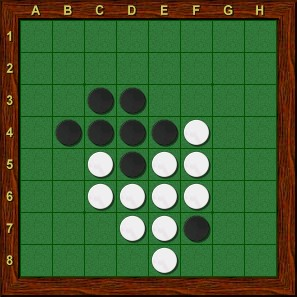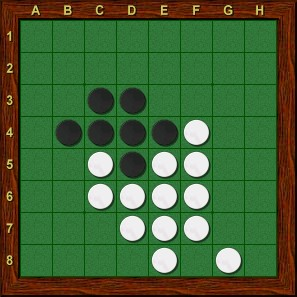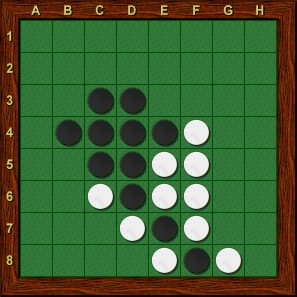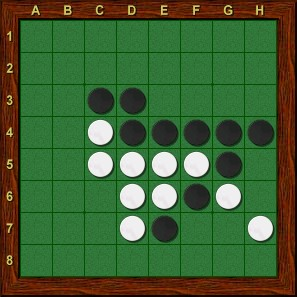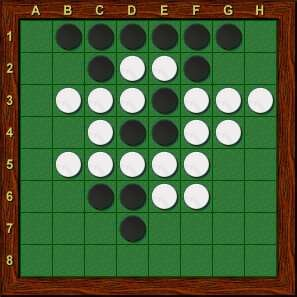Fang: Othello 101
| Klicke hier für die deutsche Version | |
|
Navigation: Main Page > Learn Othello > Book Fang |
<< previous chapter << - >> next chapter >> |
Othello 101
I’d like to start with a metaphor. In chess, the first step that a beginner would take is to understand the relative value of the different chess pieces. A beginner’s book on chess might start by showing the readers a short table like the following. If the total value of your pieces is more than the value of your opponents pieces then you’re probably winning.
| Queen | 9 pts |
| Rook | 5 pts |
| Bishop | 3 pts |
| Knight | 3 pts |
| Pawn | 1 pts |
Using this simple rule, a complete beginner at chess would expect to win more than half of their games against another complete beginner who doesn’t know it. Obviously, in any undertaking as complex as chess, one simple rule falls far short of complete understanding. As a beginner becomes more advanced and progresses, they will learn new rules – as well as some exceptions to them. In much the same way, we will begin with a few basic rules of winning Othello and then build on them.
Corners Are Good
| For beginning and intermediate players, games often revolve around battles for corners. As a first step, let’s take a look at a classic example of how important corners are. | 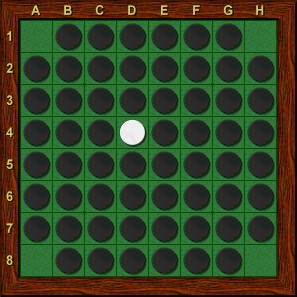
|
|
| White To Play |
| White wins 40-24! | 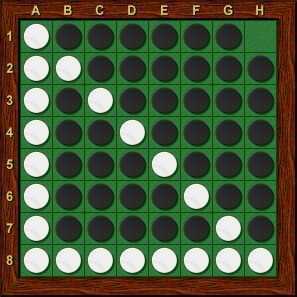
|
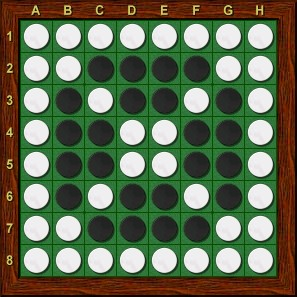
|
| WHITE PLAYS H8 | WHITE PLAYS H1 |
Stable disks
A reasonable question at this point might be - Why are corners important? The simple answer is that a corner is a guaranteed stable disk because there are no moves that outflank a corner. A stable disk is a disk that your opponent can never flip back to his or her color. Obviously, the more disks you have that are guaranteed to be your color at the end of the game, the more likely you are to win the game. Another great thing about corners is that you can use them to build more stable disks. Let’s take a look at another fantasy board to demonstrate how stable disks can be built from corners.
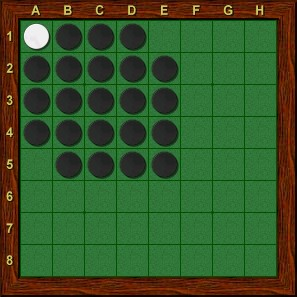
|

|
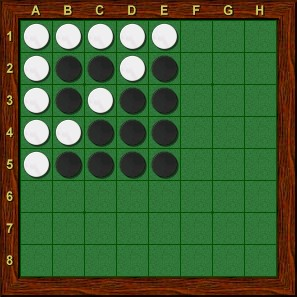
|
| WHITE TO PLAY | WHITE PLAYS E1 | WHITE PLAYS A5 |
| Here, white can create stable disks along either the A column or the 1 row by building off of the A1 corner. An example of this follows. | ||
Note that the 9 white disks on the edge from A1-A5 and from A1-E1 are all stable – however, the white disks on B4, C3, and D2, while they can’t be flipped in the current position, are not yet stable. For instance, if white were to play F2 then black could play G2 which would flip the D2 disk. While white is guaranteed a score of at least 9 at the end of the game, black has no stable disks at all. Let’s take a look at an example illustrating how building off of corners will result in accumulating stable disks.
Black can play either A7 or H1 and get more stable disks.
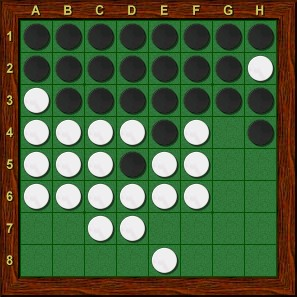
|
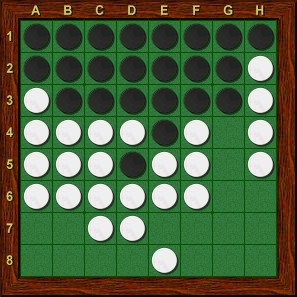
|
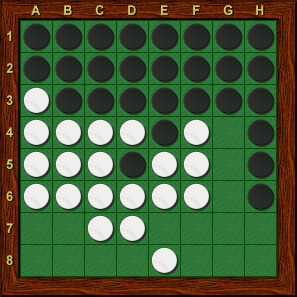
|
| BLACK PLAYS H4 | WHITE PLAYS H5 | BLACK PLAYS H6 |
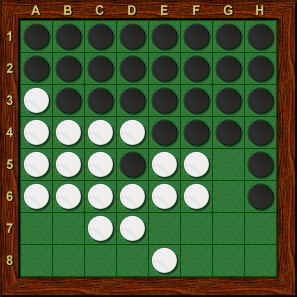
|
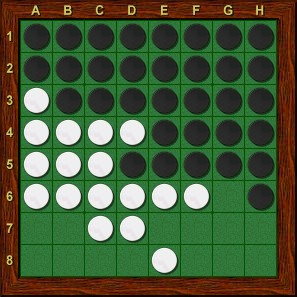
|
|
| BLACK PLAYS G4 | BLACK PLAYS G5 |
Later in the book, I will refer to the process of winning a clearly won game as “a matter of technique”. In the next few exercises I’m going to present you with the chance to win a few lopsided games to get a feel for how to do it for yourself.
Exercises:
| 3. | 4. | |
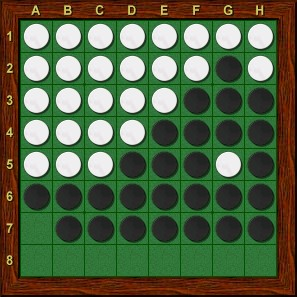
|
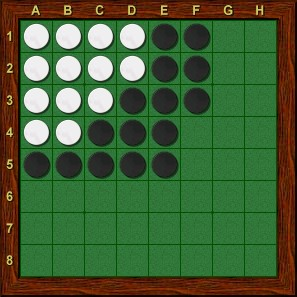
| |
| White To Play | White To Play |
Answers:
| 1. | 2. | |
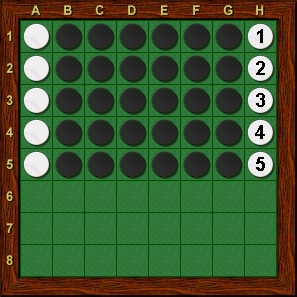
|
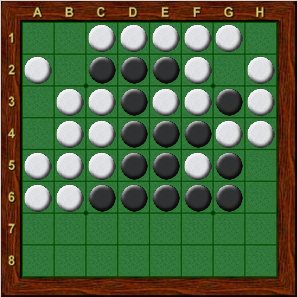
| |
| 3. | 4. | |
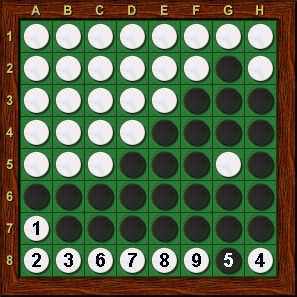
|
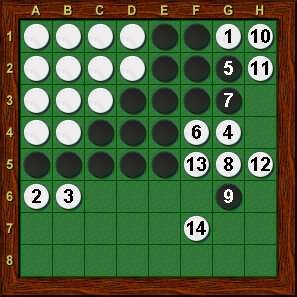
|
A Few More Tips
While corners are good and building off of them is good, that only describes 4 squares on the board. What else can we learn about the relative values of squares?
Exercise:
Can you spot white’s two worst moves in the following position?
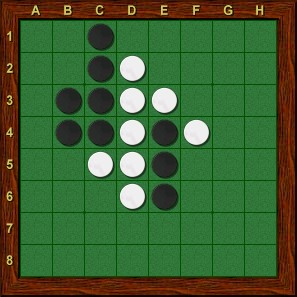
|
||
| WHITE TO PLAY |
Answer:
| B1 and B2 are white’s worst two moves.
Why? Let’s take a look at what the position would be after B1 and after B2: |
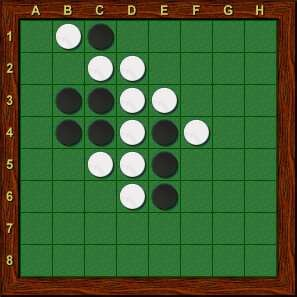
|
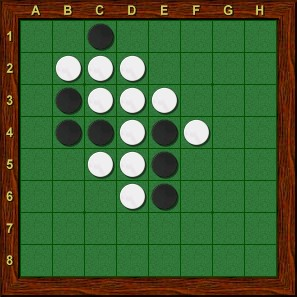
|
| AFTER B1 | OR AFTER B2 |
In either case, black can now take the A1 corner! None of the other valid moves for white from the starting position give black a corner on the very next turn. The thing we can learn from this is that the squares adjacent to the corner are dangerous to play into. Othello terminology has special names for these squares: C-squares and X-squares.
Now that we have the correct vocabulary, we can summarize what we’ve learned so far: corners are good, while C-squares and X-squares are dangerous for us to play into because if we’re not careful, our opponent will take a corner when we play into them. Even when there is no immediate threat of your opponent taking the corner, it’s usually best to stay away from C-squares and X-squares. Let’s take a look at a couple of examples:
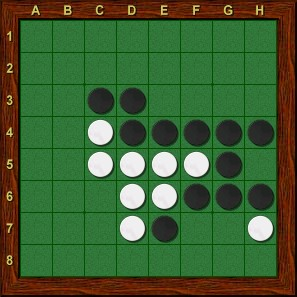
|
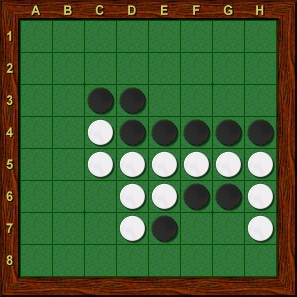
|
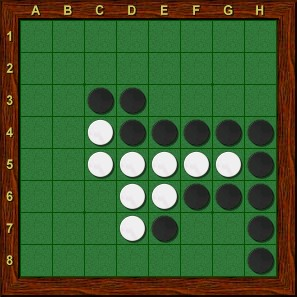
|
| BLACK PLAYS H6 | WHITE PLAYS H5 | BLACK PLAYS H8 |
This is not to say that all C-squares are bad. In both the above examples, notice how the C-squares that were played aren’t adjacent to any other white edge disks. C-squares tend to be bad when they are isolated. They aren’t as bad when you have disks adjacent to them on the edge.
For example: In the following diagram, the C-squares at B1 and G1 aren’t a liability for black because there isn’t a way for white to attack them. In fact, as we’ll discuss later on, edges where you have 6 disks (B1 through G1 in this case) are one of the best edge formations you can have.
|
Navigation: Main Page > Learn Othello > Book Fang |
<< previous chapter << - >> next chapter >> |
